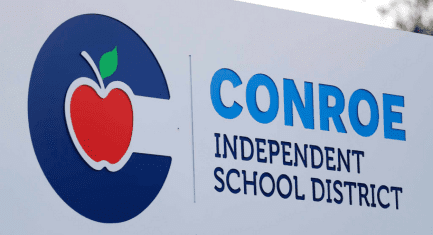If the Democrats are to capture the House majority next year, they will have to score well in the burgeoning open seat category, but so far the map does not appear particularly favorable for them. Though a strong showing in the 2017 odd-year elections, particularly in Virginia, gives them a boost headed into the midterm vote, Democrats still have a significant task ahead in order to gain ground within the House open seat universe.
Witnessing six new retirement announcements since the end of October, in part because the December 11th Texas candidate filing deadline for 2018 is fast approaching thus forcing early campaign decisions, the open seat contingent has significantly changed during the last month.
Currently, counting the PA-18 vacant seat that will be decided in a March 13th special election, 36 seats are coming open next year. Monday’s retirement pronouncement from Lone Star State Rep. Gene Green (D-Houston) brings the Democratic open protect count to eleven seats, meaning 25 incumbent-less Republican districts remain.
But, carefully looking at the GOP open seat inventory yields very few highly competitive districts. One can argue, and we do, that the number of endangered Republican seats is only two: retiring veteran Rep. Ileana Ros-Lehtinen’s (R-Miami) South Florida district, and south New Jersey Rep. Frank LoBiondo’s (R-Ventnor City) CD.
Based upon the large number of active Democratic candidates and the poor fundraising totals that Republicans there have so far amassed in this campaign, it is reasonable to view the Ros-Lehtinen seat (FL-27) as leaning toward the Democrats at this early point in the election cycle. The LoBiondo seat, particularly when remembering that the Congressman dropped below 60% only three times over his dozen congressional campaigns, should be considered a toss-up at least until both parties’ candidate fields are better defined.
But, Democrats have a problem among the open toss-ups because, today, they risk more here than do the Republicans. The seats in Minnesota (MN-1; Rep. Tim Walz; 50.3% re-election; running for Governor; Trump 53.3%), Nevada (NV-3; Rep. Jacky Rosen; 47.2% original election; running for Senate; Trump 47.5%), and New Hampshire (NH-1; Rep. Carol Shea-Porter; 44.3% re-election after losing in 2010 and 2014; retiring; Trump 48.2%) each provide Republicans with a very reasonable conversion opportunity.
Among the lean GOP seats, a category Democrats must come close to sweeping, again we see all of these districts consistently voting Republican. Here, KS-2 (Rep. Lynn Jenkins, R-Topeka; retiring), MI-11 (Rep. David Trott, R-Birmingham; retiring), NM-2 (Rep. Steve Pearce, R-Hobbs; running for Governor), PA-15 (Rep. Charlie Dent, R-Allentown; retiring), and WA-8 (Rep. Dave Reichert, R-Auburn; retiring) each have solid Republican voting histories. The last time any of the aforementioned electorates voted Democratic for the House came in 2006 and ‘08, for one term apiece, in Kansas and New Mexico.
The safe and likely Republican seats are:
ID-1 (Rep. Raul Labrador, R-Eagle/Boise; running for Governor)
IN-4 (Rep. Todd Rokita, R-Brownsburg; running for Senate)
IN-6 (Rep. Luke Messer, R-Greensburg; running for Senate)
OH-12 (Rep. Pat Tiberi, R-Galena; retiring)
OH-16 (Rep. Jim Renacci, R-Wadsworth; running for Governor)
PA-11 (Rep. Lou Barletta, R-Hazelton; running for Senate)
PA-18 (Rep. Tim Murphy, R-Pittsburgh; resigned)
SD-AL (Rep. Kristi Noem, R-Castlewood; running for Governor)
TN-2 (Rep. Jimmy Duncan, R-Knoxville; retiring)
TN-6 (Rep. Diane Black, R-Gallatin; running for Governor)
TN-7 (Rep. Marsha Blackburn, R-Brentwood; running for Senate)
TX-2 (Rep. Ted Poe, R-Atascocita; retiring)
TX-3 (Rep. Sam Johnson, R-Plano; retiring)
TX-5 (Rep. Jeb Hensarling, R-Dallas; retiring)
TX-21 (Rep. Lamar Smith, R-San Antonio; retiring)
VA-6 (Rep. Bob Goodlatte, R-Roanoke; retiring)
WV-3 (Rep. Evan Jenkins, R-Huntington; running for Senate)
These districts are all reliably Republican. The situation here changes, however, if redistricting lawsuits in Pennsylvania and Texas alter the maps. Particularly in the Keystone State, many of the districts could drastically change and become highly vulnerable for Republicans if the courts direct boundary changes before the 2018 election.
Democrats are clearly in the driver’s seat to protect their own open seats that are rated as safe or likely D. They are:
AZ-9 (Rep. Kyrsten Sinema, D-Phoenix; running for Senate)
CO-2 (Rep. Jared Polis, D-Boulder; running for Governor)
HI-1 (Rep. Colleen Hanabusa, D-Honolulu; running for Governor)
MA-3 (Rep. Niki Tsongas, D-Lowell; retiring)
MD-6 (Rep. John Delaney, D-Potomac; running for President)
NM-1 (Rep. Michelle Lujan Grisham, D-Albuquerque; Governor)
TX-16 (Rep. Beto O’Rourke, D-El Paso; running or Senate)
TX-29 (Rep. Gene Green, D-Houston; retiring)




